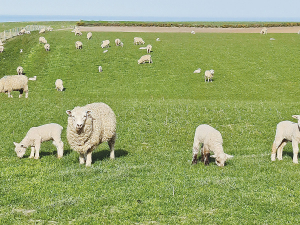Salmonellosis Surge: MPI reports rising cases in New Zealand cattle
Salmonellosis is a serious disease in cattle.
 Farmers are being urged to be on lookout for diarrhoea and sudden death in their ewes as reported cases of Salmonella Hindmarsh rise.
Farmers are being urged to be on lookout for diarrhoea and sudden death in their ewes as reported cases of Salmonella Hindmarsh rise.
Beef + Lamb NZ is advising farmers in Southland, Taihape and Hawke’s Bay to be on the lookout for diarrhoea and sudden death in their ewes as reported cases of Salmonella Hindmarsh rise.
B+LNZ’s senior advisor animal welfare and biosecurity Will Halliday is recommending that farmers be on guard for signs of the deadly disease, which is likely to be caused by weather-related stress.
He says vets in Taihape and Hawke’s Bay are reporting an increased frequency of significant outbreaks of Salmonella Hindmarsh in mixed-age ewes, but there are also reported outbreaks in Southland.
Salmonella Hindmarsh is triggered by stress-induced changes to the gut bacteria allowing salmonella to proliferate in the gut. Large numbers of bacteria are passed in the faeces contaminating pasture and acting as a source of infection for other sheep. In most cases, carrier sheep are the source of the infection.
Halliday says some ewes die before they develop any clinical signs, so the first sign of a problem might be the discovery of dead ewes.
“Some will have evidence of khaki-coloured watery scour. Clinical signs include depression, lethargy, not eating and mild to severe diarrhoea. Affected ewes may die within 24–48 hours.”
Halliday says a vaccine is available for the prevention of the disease, but farmers need to seek advice from their vet about the best management strategies for their specific operation. He adds that it is important to remember that Salmonella Hindmarsh is a zoonotic disease, meaning it can be passed to humans and cause illness.
“Washing hands thoroughly after handling livestock and wearing protective clothing can help stop the transmission of this nasty disease.”
Halliday encourages farmers seeing any signs of diarrhoea or sudden death in their ewes to call their vet and put a management plan in place to prevent further losses.
The Push-Up Challenge, an event which combines mental health and fitness, is set to launch in New Zealand in 2026.
Last month's Agritechnica event led to a wide group of manufacturers celebrating successes when the 2026 Tractor of the Year Competition winners, selected by a panel of European journalists, were announced in Hanover Germany.
According to the latest Federated Farmers banking survey, farmers are more satisfied with their bank and less under pressure, however, the sector is well short of confidence levels seen last decade.
Farmer confidence has taken a slight dip according to the final Rabobank rural confidence survey for the year.
Former Agriculture Minister and Otaki farmer Nathan Guy has been appointed New Zealand’s Special Agricultural Trade Envoy (SATE).
Alliance Group has commissioned a new heat pump system at its Mataura processing plant in Southland.

OPINION: The release of the Natural Environment Bill and Planning Bill to replace the Resource Management Act is a red-letter day…
OPINION: Federated Farmers has launched a new campaign, swapping ‘The Twelve Days of Christmas’ for ‘The Twelve Pests of Christmas’ to…